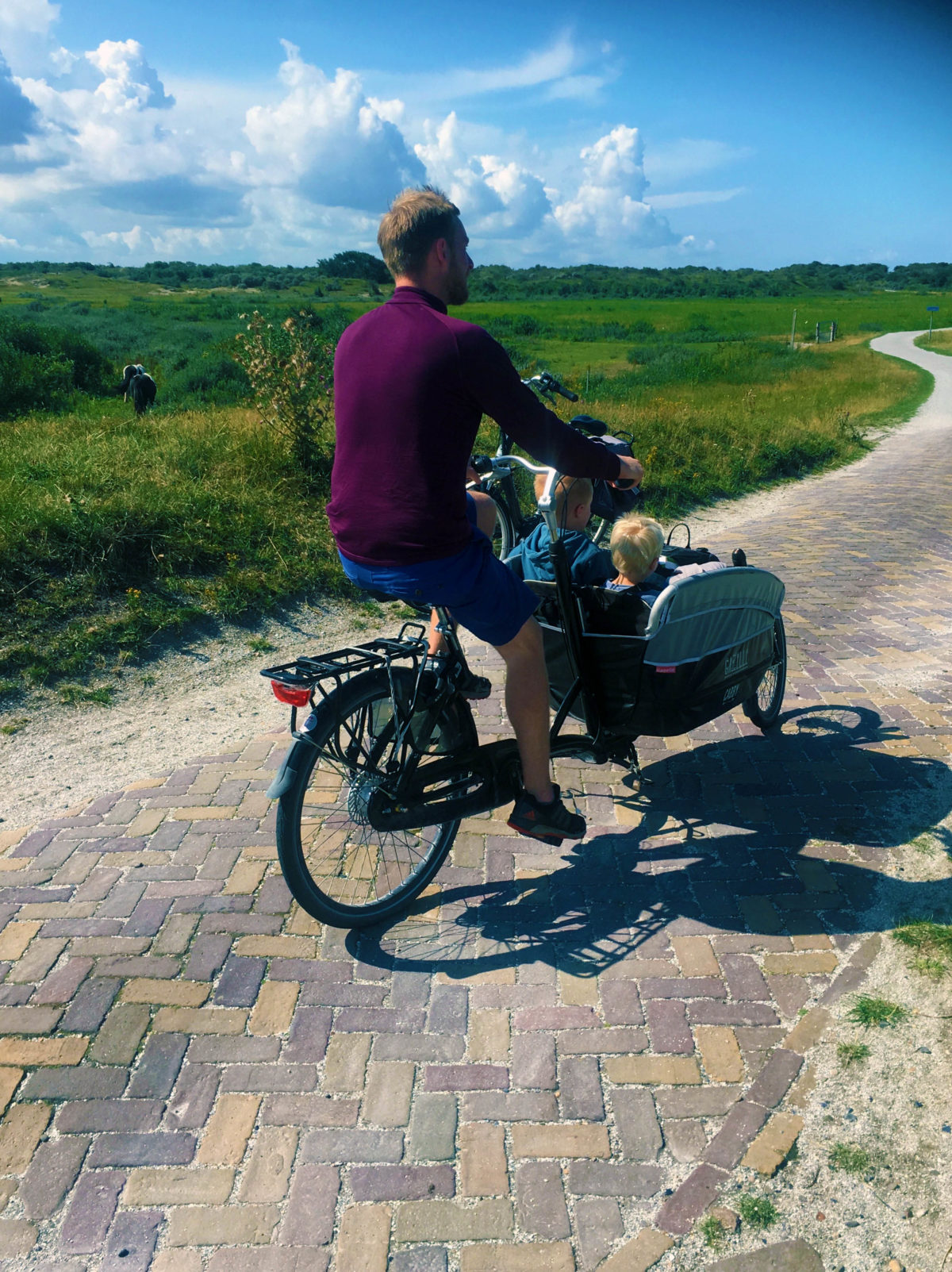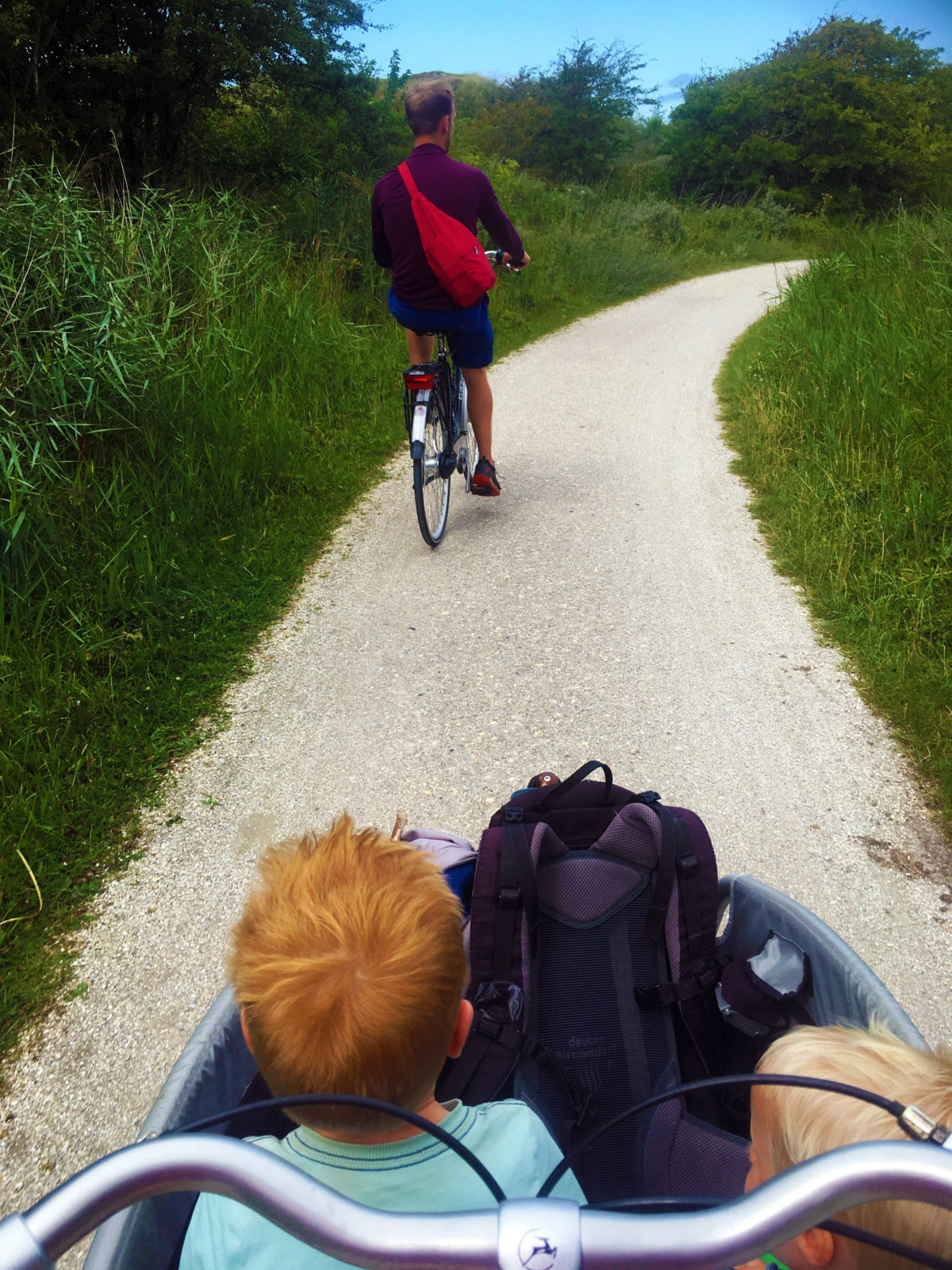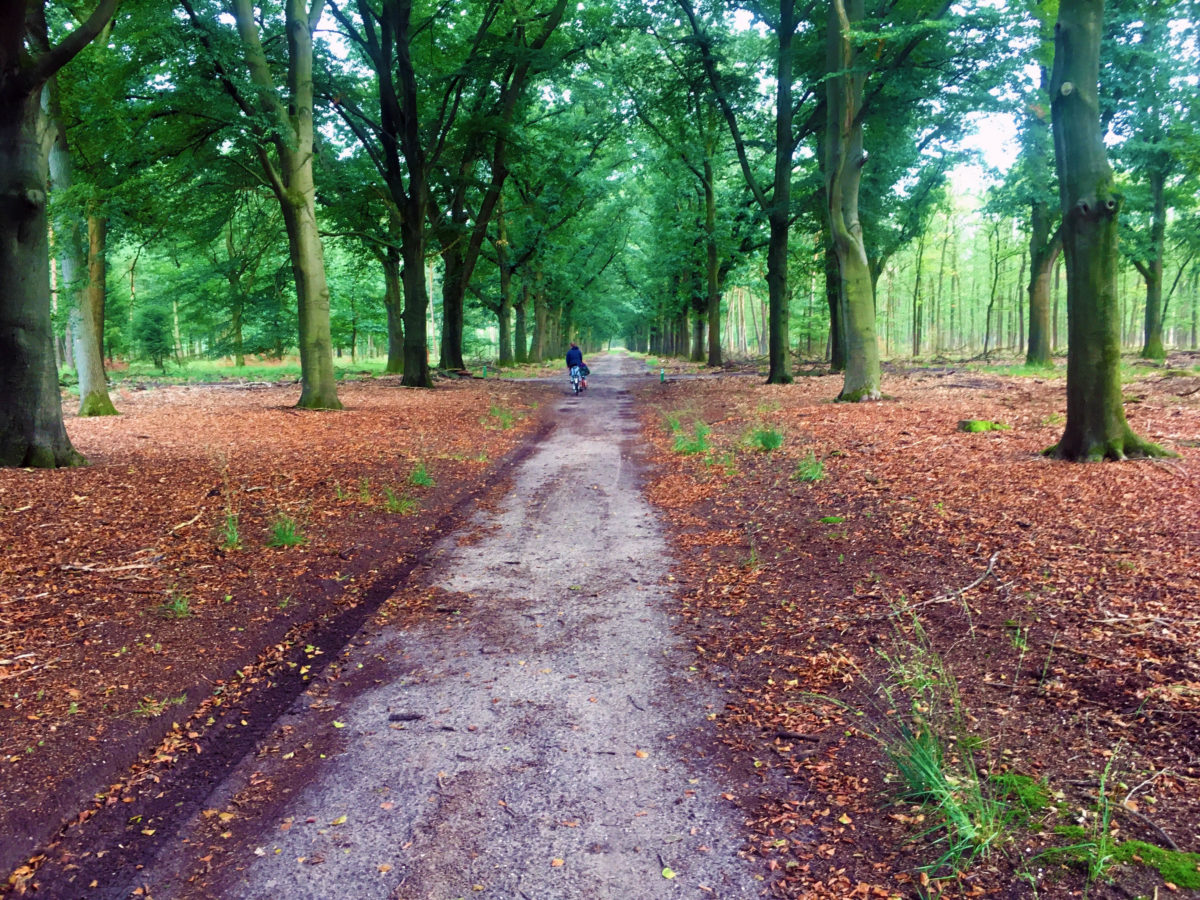Last summer, my partner and I and our 4 and 2-year-olds decided to pack up the campervan and go for a 3-week trip to visit relatives and sneak in some cycling in Holland. We strapped the bikes to the back of the van and set off towards the land of cheese, clogs and endless cycle paths.
From day one, it was clear that that Dutch people don’t wear cycle helmets – unless they are in a race. It was also clear that if you do, you look like a plonker – this was evident from the stares and giggles from the locals. Yes, I knew this would happen, but we brought four helmets anyway because we always insist on helmet-wearing at home. I couldn’t explain to my kids why you had to wear a helmet at home, but it was ok to not wear one in Holland.
But of course, I can. In Holland, you can cycle most places without ever coming anywhere near a car. You cycle on segregated paths, roads where cars are speed limited, where the emphasis is on vehicles being careful around cyclists rather than the other way around. The trip allowed us to do miles of cycling with a 4-year-old gaining confidence on his bike, and without the parental stress of having to keep him safe. It re-invigorated our sense of the pleasure of family cycling, of discovering new places on a bike, of travelling slowly.
We took great pleasure in the things we often can’t do at home – cycling three-abreast without triggering the ire of car divers, enjoying car-free city centres, taking bikes on trains without having to book in advance, even lobbing our litter into the wide-mouthed rubbish bins designed for cyclists to use without stopping. If we were driving to a new town, we’d often park on the outskirts, take the bikes off and cycle into the centre, like a Dutch-style “park and ride”.

Planning our journeys
In Holland, there are numbered LF routes (landelijke fietsroutes, nationwide cycle routes), a national network of over 2500 miles of cycle paths often linking to the Eurovelo network. They are signed in both directions, where “a” will mean north to south or west to east and “b” the other way around.
Because we were doing day journeys with children, we mostly used the regional cycle network (knooppuntroutes, interchange routes) which fill in the gaps between the national routes. Each interchange has its own individual number, marked on signposts, with arrows to the surrounding interchanges. So rather than following a line on a map, you head to points – join-the-dots for cyclists. These cycle routes are in no way the quickest, but they are the most beautiful, often quietest routes – through forests, alongside dykes and fields. Often planned by local volunteers, they also take in places of cultural and historical interest. And in typical Dutch-style, excellently maintained, signposted and well-used. We planned our routes through a combination of online route planning thanks to the Dutch Cycling Union (https://routeplanner.fietsersbond.nl/) and paper maps (Basiskaart Netwerk LF-routes Nederland).

White Bikes in the Hoge Veluwe
We spent a couple of days in the Hoge Veluwe, 21 square miles of national park crisscrossed with 25 miles of dedicated cycle paths. Around the park, bikes are overwhelmingly the main form of transport. You leave your car at the entrance, pay your park entry and pick up one of the free 1,800 Witte Fietsen (white bikes) and go exploring. They are typical bike hire material – sturdy, heavy, no-frills (who needs gears in such a flat country anyway?) Each bike comes with a child seat over the rear wheel and some have front-mounted baby seats. They even have custom hire bikes available, including wheelchair bikes and tricycles.
We took two white bikes, put the 2-year- old in the seat in front of me, and the 4-year-old took his own. Because of his age, he couldn’t cycle all day long, so when he needed a rest, he sat on the back of my bike, and we strapped his bike on the back of his Dad’s. And off we went for a day’s exploring the varied landscapes of the park – desert-like sands, dense forests, wetlands, heathland, and of course the cafés, playparks and toilet stops on the way.
Although London didn’t get its first so-called Boris Bikes until around 2010, the community bicycle programme in the Hoge Veluwe has a much longer history. Luud Schimmelpennink, a Dutch inventor and politician came up with the White Bicycle Plan in 1965, which was to leave 2,000 bikes painted white around Amsterdam to be used by everyone. Although his plan didn’t actually come to fruition in Amsterdam, the Hoge Veluwe liked the idea and bought 50 bikes in 1974. Now, of course, the idea is gaining momentum in cities around the world.

Schiermonnikoog, the cycling island
We took a day trip to Schiermonnikoog, the second smallest of the five populated Wadden Sea islands stretching along the top of Holland. As the island is only 9 miles long and 2 miles wide, with less than a thousand permanent residents, there is not much provision for motorised vehicles. In fact, you can only bring a car if you are a resident with a special licence, and the only way to get there is by foot/bike passenger ferry.
Once you get off the ferry, the island has a web of cycle paths all around it, taking you to massive sandy beaches, dunes, lighthouses, forests, wetlands and some great World War II history (it was the last part of Europe to be liberated by the Allies). If you don’t have your own bike, you can get an electric bus to the main village and hire one. As we wanted to spend the whole day on the bikes (too much for the 4-year-old to do on his own bike), we left our bikes on the mainland and hired a cargo bike. Incredibly easy to manoeuvre and cycle, it allowed us space for both kids, beach toys and the all-important picnic.
It must be said that by this point in our trip, I had ditched my helmet. I was fed up of being the only plonker wearing a helmet where the only danger to my head was through me losing my concentration and careering into a ditch or a tree.
As soon as we got home to the UK, the helmets were straight back on. It’s just not the same cycling here as it is in Holland. Yes, it’s easier to cycle in Holland. It’s flatter. It’s denser and distances are smaller. But it’s also a cultural and structural thing – Dutch people have just built their country and their culture around making it easier and safer for cycling. Until this happens in the UK, I’m going to keep wearing, and insisting on my kids wearing, cycling helmets. In the meantime, we’re going to enjoy the pleasure of taking family holidays in a country where we can hop on our bikes and feel the wind in our hair.
If you are planning a family cycling trip, make sure you are covered with our bicycle insurance and travel insurance packages.